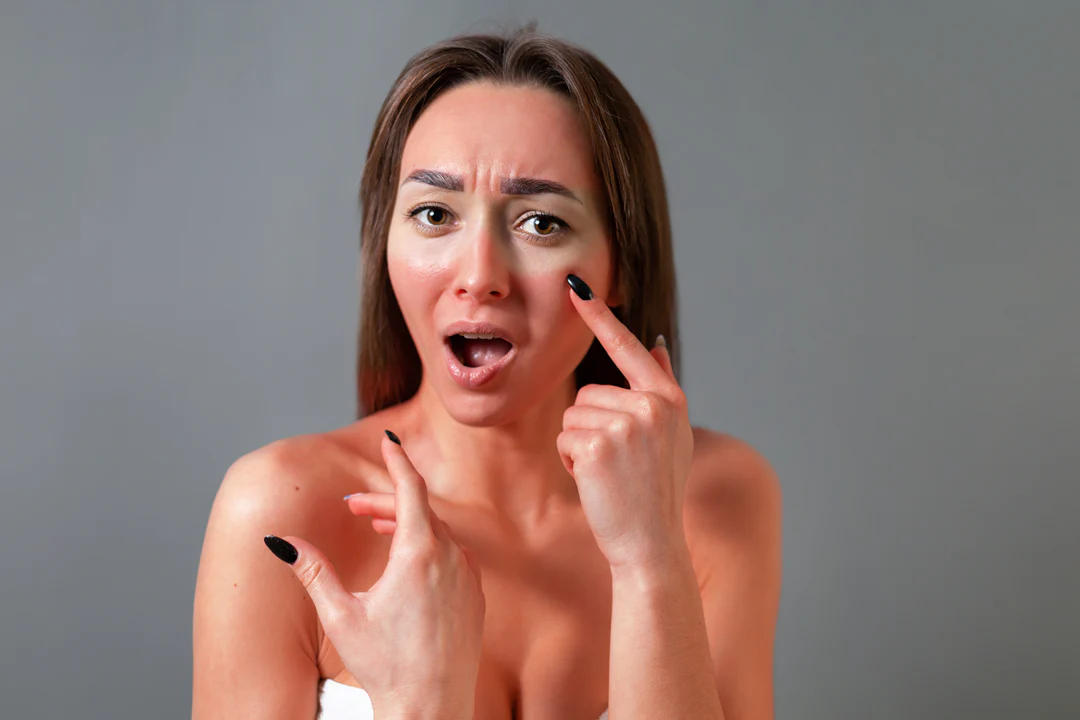
Can you use azelaic acid to treat a sunburn?
Azelaic acid is well known for treating acne and rosacea without the side effects. Many people like it because it works on the skin and exfoliates in a similar way to other acids. The main difference is that azelaic acid is known for its stability in formulas and gentleness on the skin compared to other popular acids, such as glycolic acid.
Today we want to look at how azelaic acid affects the skin and answer the question of whether you can use azelaic acid to treat a sunburn. For those who haven’t noticed, I will briefly explain the benefits of the acid.
What is azelaic acid? What does it do for the skin?
Obtained from grains such as barley, wheat and rye
Contains antibacterial and anti-inflammatory properties
Can help those with acne and rosacea by clearing out pores and clearing out bacteria, preventing further breakouts and relieving inflammation
Available in different percentages, up to 15% in over-the-counter formulas and prescription topical treatments
Fights signs of hyperpigmentation and dark spots, allowing the skin to heal quickly
Improves skin structure, making it smoother and giving your complexion a radiant glow
If you want to learn more about the benefits of azelaic acid, see this detailed blog post on The Beauty Insiders.
Is Azelaic Acid Sun-Sensitive?
No, azelaic acid is not sun-sensitive, which is an unusual property for a chemical peel acid. However, this doesn’t mean you can skip the use of sunscreen, because when the skin is exposed to the sun without protection, newly shed skin cells can become damaged, which can lead to a variety of skin problems. What I mean by this is that the lipid barrier on the surface of the skin becomes damaged and weakened. This is because it is deprived of the vital water and oils it needs to protect the skin from damage caused by free radicals such as UV rays, pollution, central heating and other environmental aggressors.
When the surface of the skin is damaged, you’ll notice signs of premature aging, such as fine lines and wrinkles becoming more pronounced, dark spots and pigmentation worsening. Therefore, it’s important to apply nourishing moisturizing ingredients as well as sunscreen every day to keep the skin’s protective barrier strong and functioning properly.
Which acids are good for sunburn?
Acids that have an exfoliating effect should be completely avoided for treating sunburn, as exfoliation of sunburned skin can lead to severe irritation and dryness. There is one acid that can be used to treat sunburn and is well known for its impressive results: hyaluronic acid. Don’t let the name fool you, it works very differently from other acids. Instead of shedding layers of dead skin cells, hyaluronic acid acts as a humectant. What I mean by this is that it draws moisture into the skin and locks it in, keeping it plump and hydrated all day long. This works wonders for skin that’s been exposed to too much sun, especially if you keep hyaluronic acid products in the fridge.
What shouldn’t you apply when you have a sunburn?
There are a few things you should avoid if you get a sunburn. Here are some examples of things that soothe and heal your skin.
Avoid wearing tight clothing.
When the skin is burned, it responds to the trauma by increasing blood flow to the area. The skin needs loose-fitting clothing to avoid redness, swelling, and an increased risk of blisters.
Avoid petroleum jelly
Wait until the sunburn subsides before applying petroleum jelly, as the product won’t let heat escape. Instead, opt for an after-sun formula that’s rich in aloe vera and other moisturizing, breathable ingredients.
No peeling
Avoid using any form of exfoliants, such as glycolic acid, salicylic acid, retinol, and facial exfoliants, while the skin is healing. Once the skin is healed and sunburns no longer occur, you can reintroduce your favorite skincare products into your routine.
Don’t peel or scratch the sunburn
While it’s tempting to scratch and exfoliate, it’s best to apply a generous amount of moisturizing products. This keeps the skin soft and hydrated and avoids possible irritation and further discomfort.
Remember to stay hydrated
Drink plenty of water to keep your skin hydrated and heal quickly.
Here are some examples of ways to avoid sunburn. Remember to stay out of the sun and regularly apply sunscreen with at least 30% SPF.
Is it harmful to apply salicylic acid after a sunburn?
Yes, it is not recommended to use salicylic acid to treat sunburn. This is because the skin that has become sensitive loses the water and oils that the skin barrier needs.
You will also find that sebum production can cause the skin to produce too much oil, which can lead to breakouts of acne and other breakouts. As I mentioned before, you should avoid using exfoliating acids to treat sunburn and focus on healing the skin instead. Once it is back to its best condition, you can start your normal skin care routine.
Does Azelaic Acid Reduce Redness?
Yes, one of the main benefits of azelaic acid is its ability to reduce and calm redness. Because of this, many people with sensitive skin are prone to redness and other skin conditions such as rosacea. The anti-inflammatory properties of azelaic acid can calm flare-ups and reduce swelling. Azelaic acid is very effective for redness, but it does not have the same effect on sunburns because excessive UV radiation can cause damage to the skin, which can worsen and penetrate deep into the skin when used with exfoliating ingredients.
You can learn more about using azelaic acid to treat sunburn here. Don’t forget to find us on Instagram if you have any other questions.


